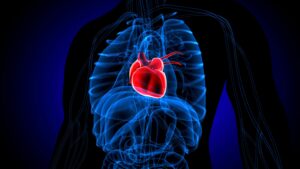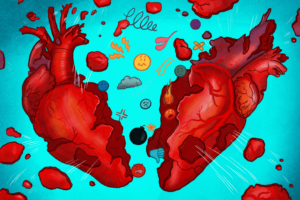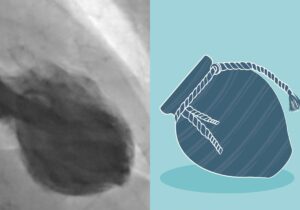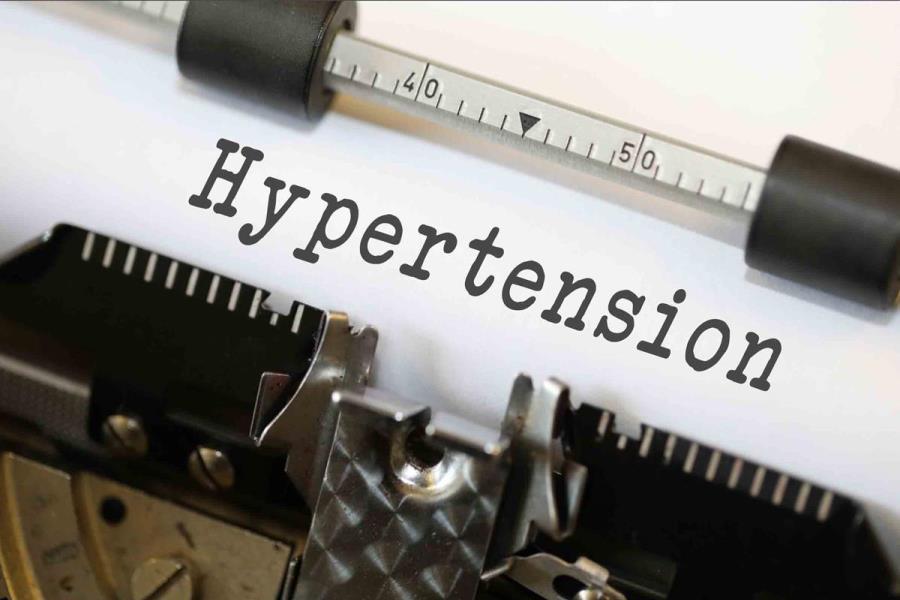In Nigeria, it is not uncommon to hear people make this comment “Las Las, na everybody go chop breakfast”, a very popular line from a song composed by Burnaboy. This is in response to heartbreak, or heartache when two persons in a relationship experience break up. This is usually said on light notes and figuratively, however, Broken Heart Syndrome is real and requires medical attention.

Definition:
Broken Heart Syndrome is a temporary condition of the heart that occurs when muscles of the heart become weak and startled acutely.
This condition also known as Takotsubo Cardiomyopathy or Stress Cardiomyopathy or Apical Ballooning Syndrome mimics a heart attack and develops as a result of severe emotional and physical stressors and not as a result of clogged arteries as in the case of a heart attack.
It affects just a part of the heart and the unaffected part of the heart continues to pump blood but with more force to make up for the portion left out.
The part of the heart usually affected is the left ventricle which is the main pumping portion of the heart.

Facts:
- It is a known fact that women are more emotional than men and are less likely to stand any form of severe stress. Therefore, interestingly broken heart syndrome occurs almost exclusively in women.
- More than 90% of reported cases occur in women aged 58 – 75 years.
- It has been documented that about 5 out of every 100 women that are thought to have a heart attack actually suffer from this disorder.
- The condition is more likely to occur in persons who are above 50 years of age, and also in people with a previous history of mental illness like anxiety disorders, depression and previous history of seizure disorders and head injury.
Implicated Stressors and Causes:
The stressors can be either emotional or physical.
- Emotional Stressors include;
- Grief
- Divorce
- Loss of job
- Loss of property
- Financial loss
- Emotional memories
- Bad news
- Intense fear
- Fierce argument
- Serious threats
- Extreme anger
- Surprise
- Unexpected wins
These emotional stressors earned the condition the name Broken Heart Syndrome.

B. Physical Stressors include;
- Extreme physical activity
- Severe pain
- High fever
- Stroke
- Seizure
- Difficulty breathing
- Profuse bleeding
- Low blood sugar
- Surgery
- Domestic violence
- Abuse
- Accident
- Sudden drop in blood pressure
- Substance abuse like methamphetamine, cocaine
- Side effects of some drugs like epinephrine, duloxetine, venlafaxine, levothyronine, nasal decongestants
While the above-listed stressors are implicated as causes of Broken Heart Syndrome, the exact pathway at which they cause the syndrome is unclear. However, the role of the stress hormone, adrenaline which is released in response to these stressors is queried.
Symptoms:
The three major symptoms mimic the heart attack and include;
- Sudden, severe chest pain.
- Shortness of breath
- Weakening of the left ventricle of your heart
Other symptoms are;
- Backflow of blood to the lungs
- Irregular heartbeats
- Low blood pressure
- Excessive sweating
- Dizziness
- Nausea

Complications:
- Rupture of the left ventricle of the heart.
- Heart failure
- Blood clot in the wall of the left ventricle.
- Left ventricular outflow tract obstruction.
- Cardiogenic shock.
- Complete atrioventricular block.
- Pulmonary edema
- Hypotension
- Arrhythmias
- Heart valve failure
- Death
Diagnosis:
A doctor makes this diagnosis after a proper medical history has been gotten from the patient, a physical examination has been done and all indications point to the condition.
To aid in confirming the diagnosis, the doctor may request some tests that show the electrical activity of the heart, the size and even the motion of the heart.
For broken heart syndrome, the tests result will reveal an abnormal electrical activity of the heart and an enlarged heart. The left ventricle is the enlarged portion. It will have an enlarged apex but a narrow base hence the name apical ballooning. This will cause the left ventricle to resemble the Takotsubo pot of the Japanese, hence the name Takotsubo syndrome.

However, with all these changes, there will be no blockage in the vessels that supply the heart muscle with nutrients and oxygen. This becomes the major distinction between Broken Heart Syndrome and Heart Attack.
Treatment:
There is no standard treatment plan for Broken Heart Syndrome. Treatment aims to alleviate the symptoms experienced by the patient and are;

- Angiotensin-converting enzyme inhibitors to lower blood pressure
- Angiotensin II receptor blockers to lower blood pressure
- Beta-blockers to slow the heart rate
- Diuretics to reduce fluid in the body
- Blood thinners if there is a blood clot
- Anti-anxiety medication to manage stress
- Cardiac rehabilitation to strengthen heart muscles
- Stress management following the stressor that caused the condition.
Conclusion:
Prevention is better than cure, and preventing this condition balls down to being able to control and manage stress. However, the daily stressful activity may not apply as triggers to the condition because these are not sudden but the triggers that cause the condition are usually sudden. This does not neglect the need to effectively steer out stressful activities.
Healthy living is another preventive measure and this includes, good exercise, eating healthy diets, less intake of alcohol and fatty meals, decreasing smoking, increasing fruits and vegetable consumption and resting adequately to provide benefits to the heart.


